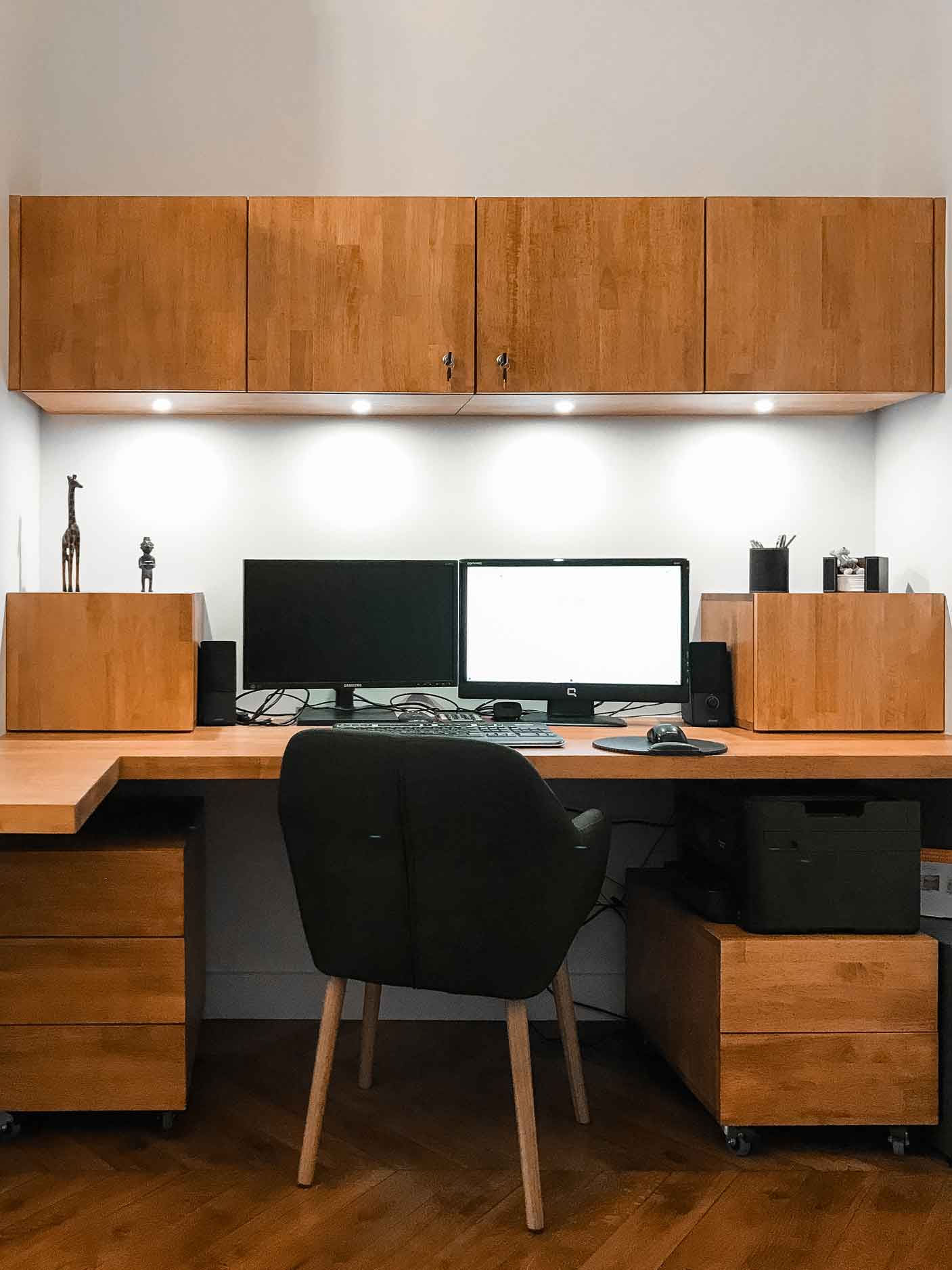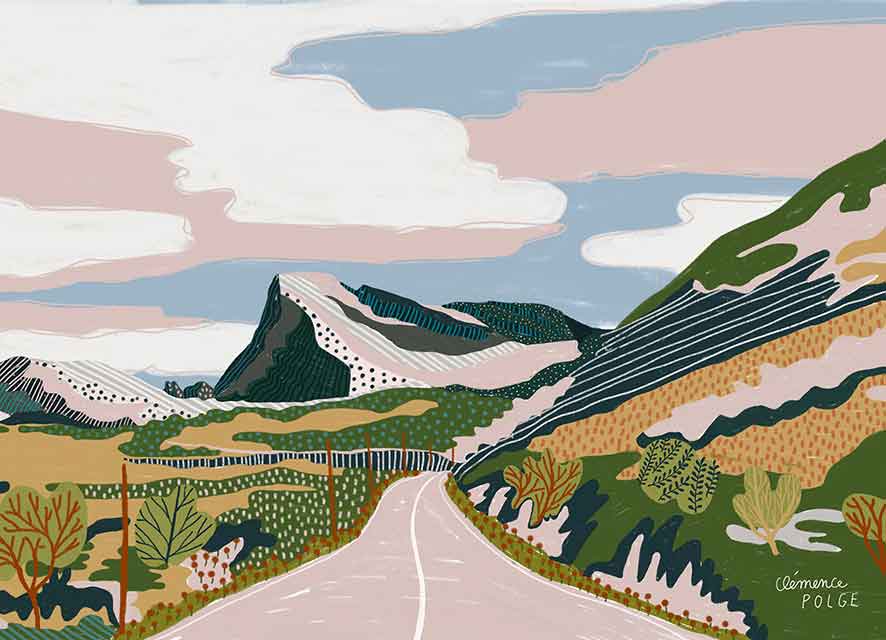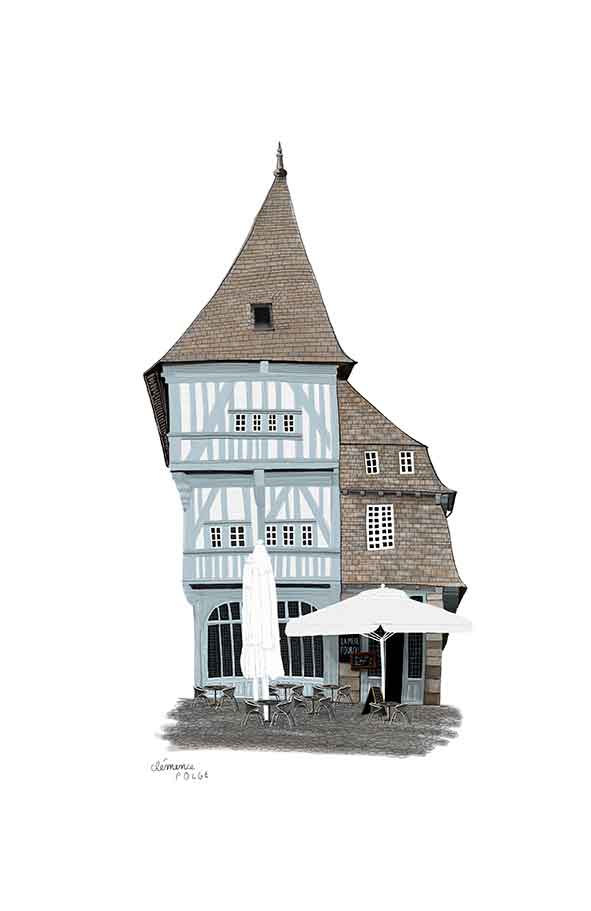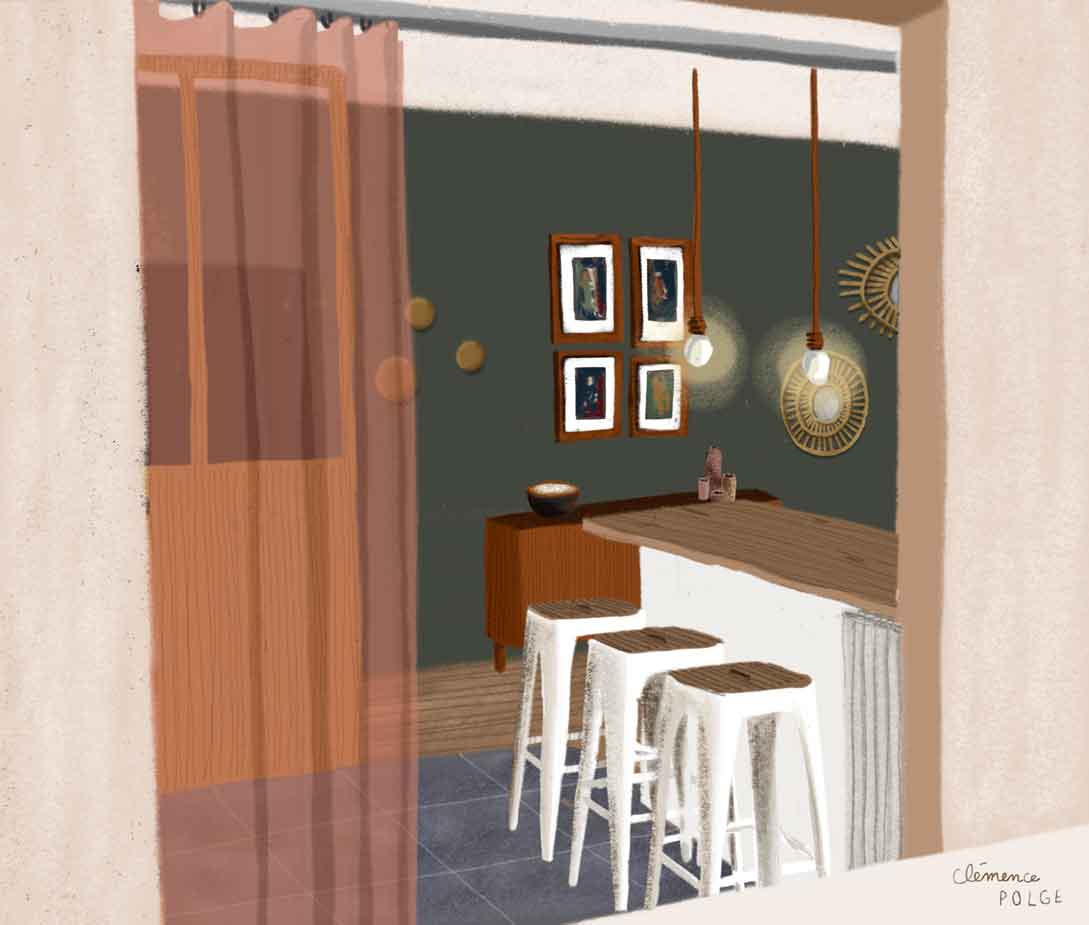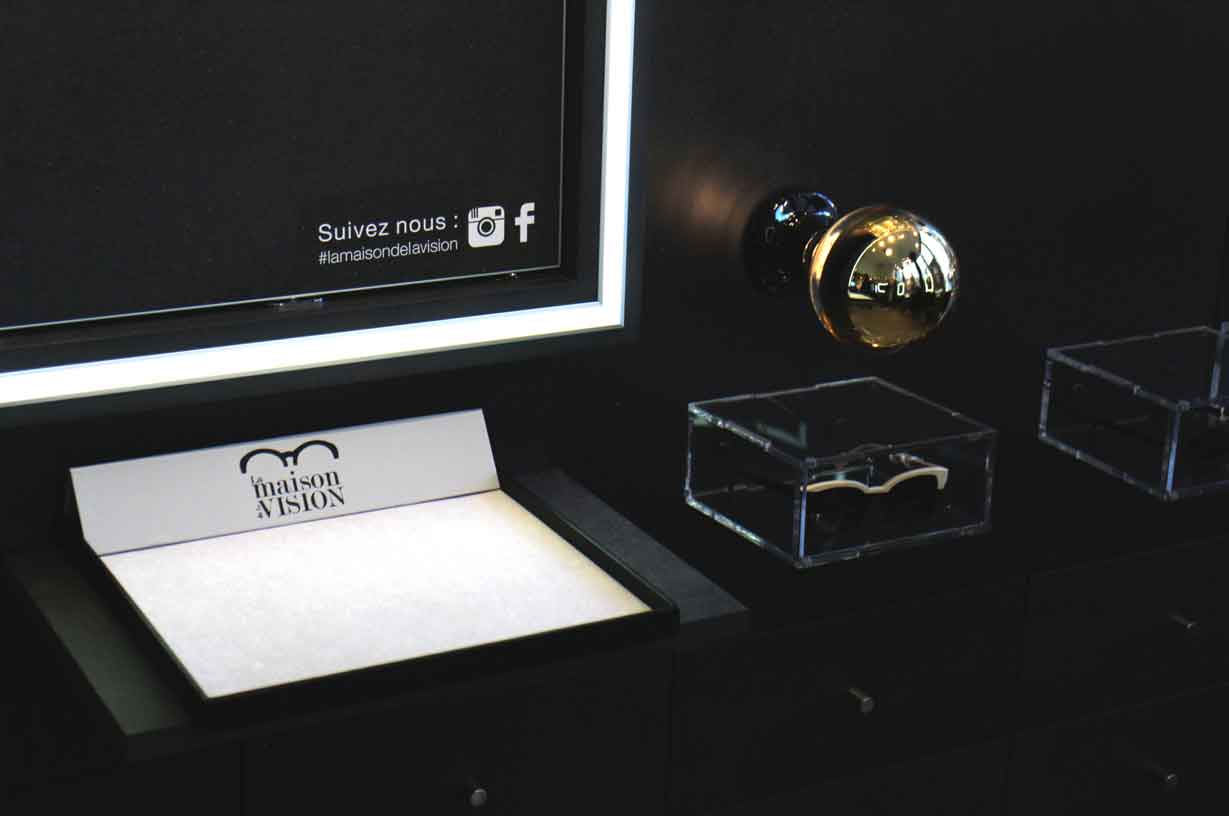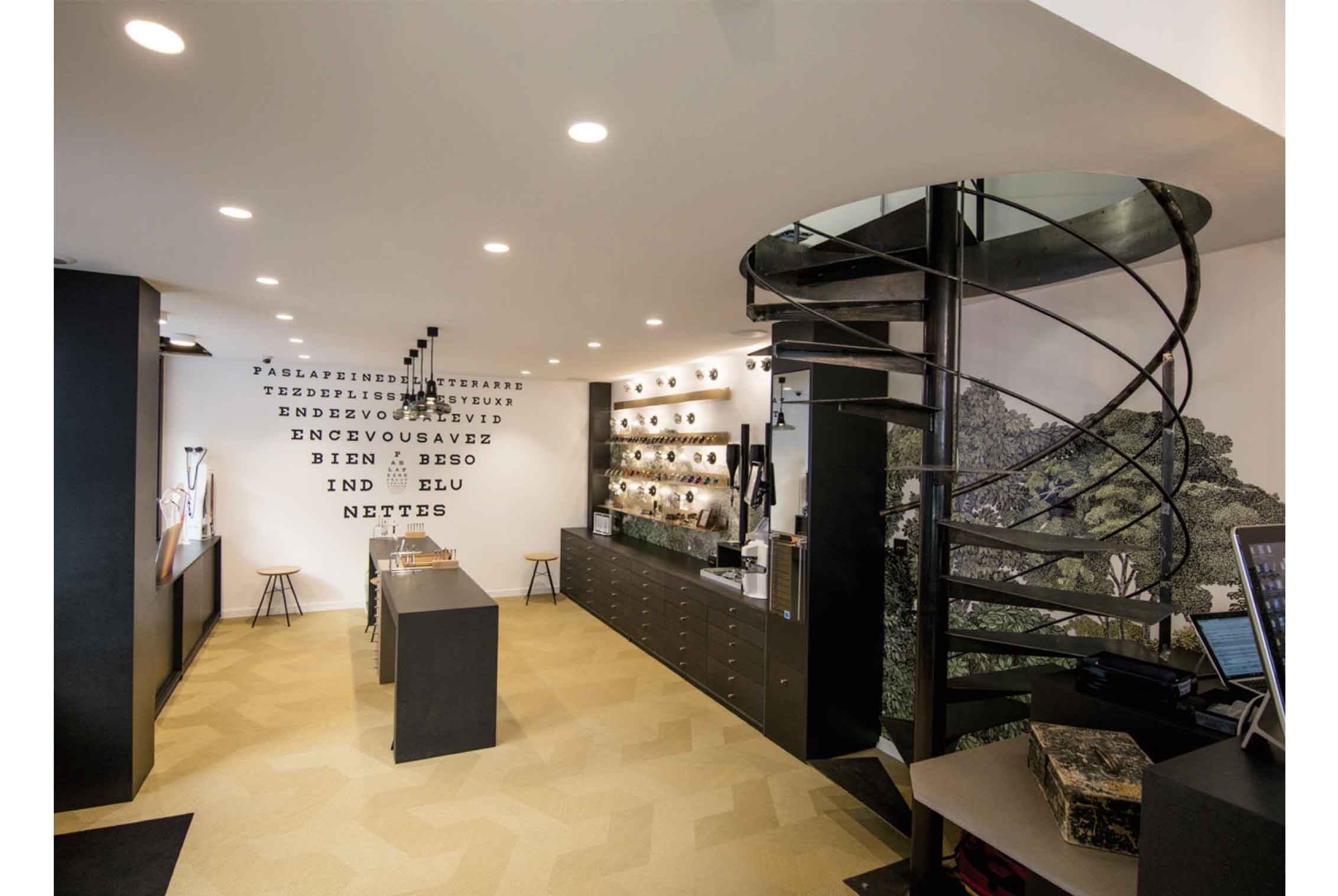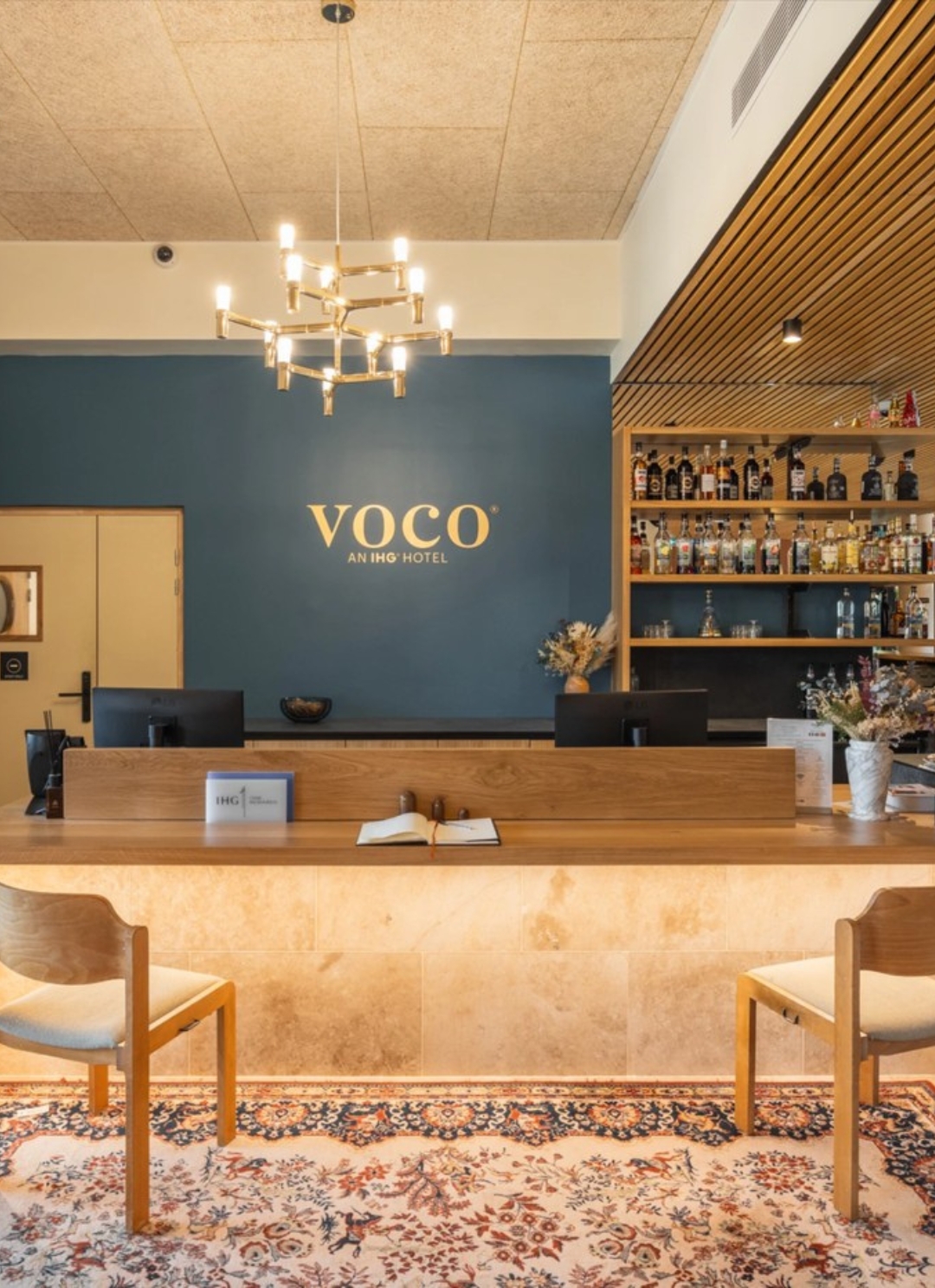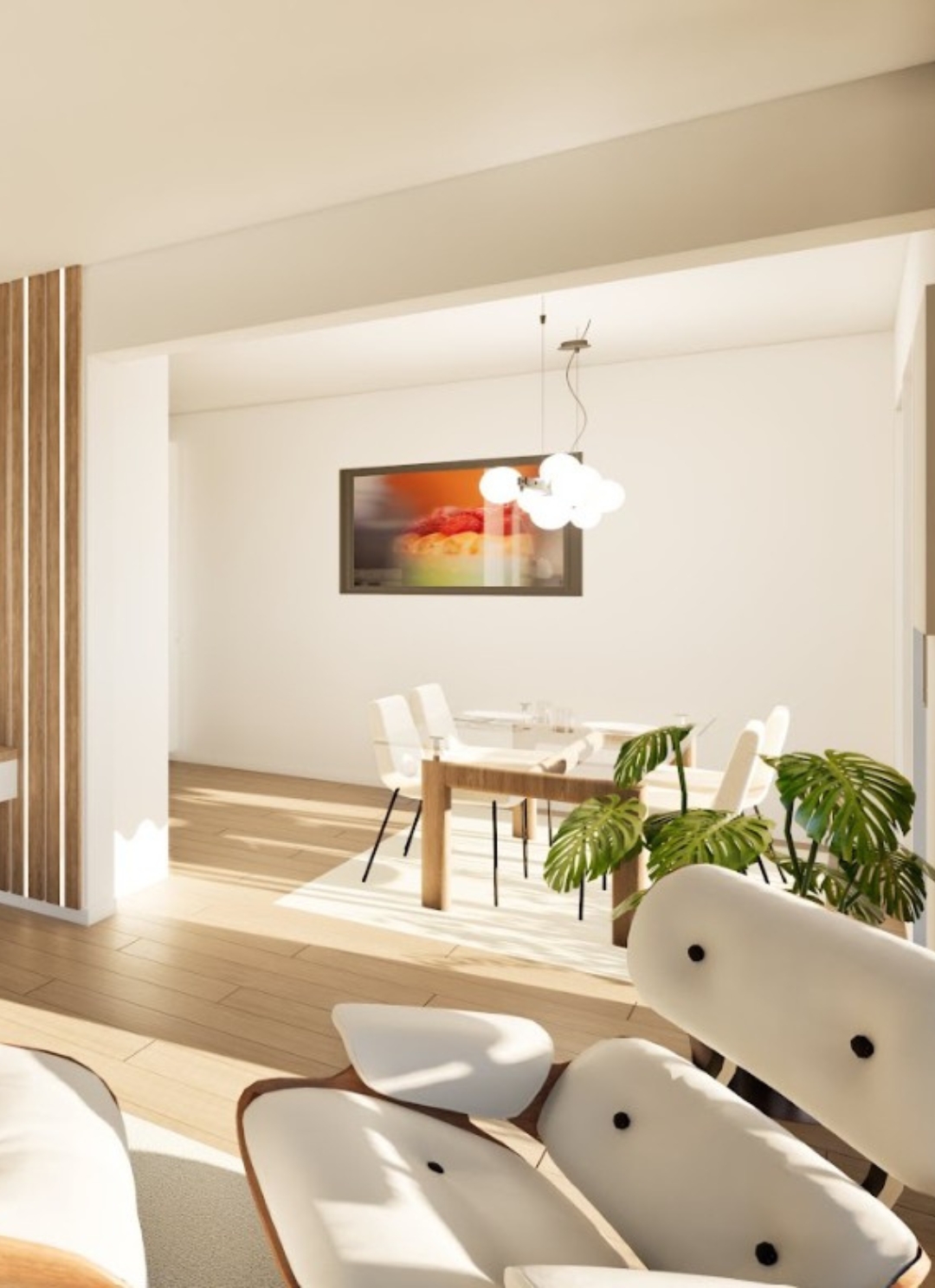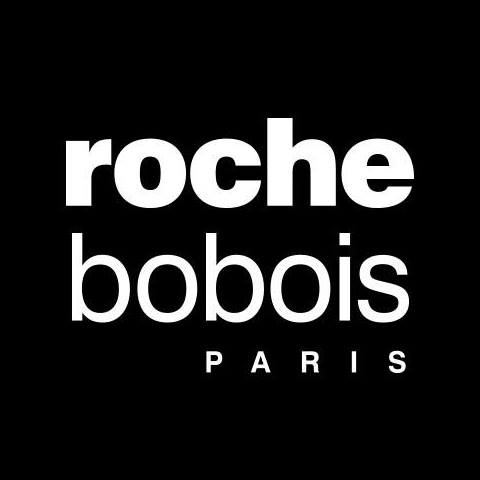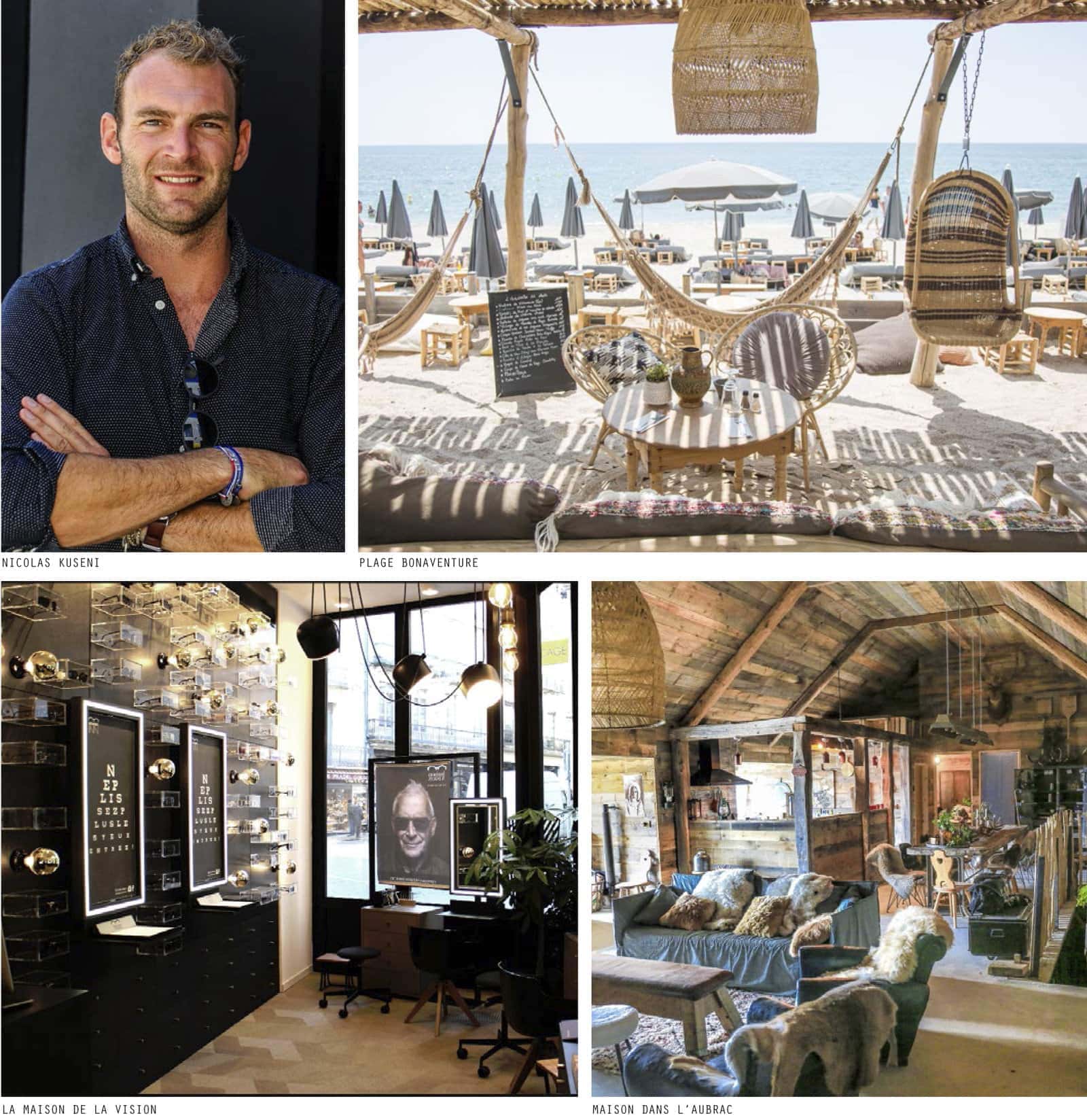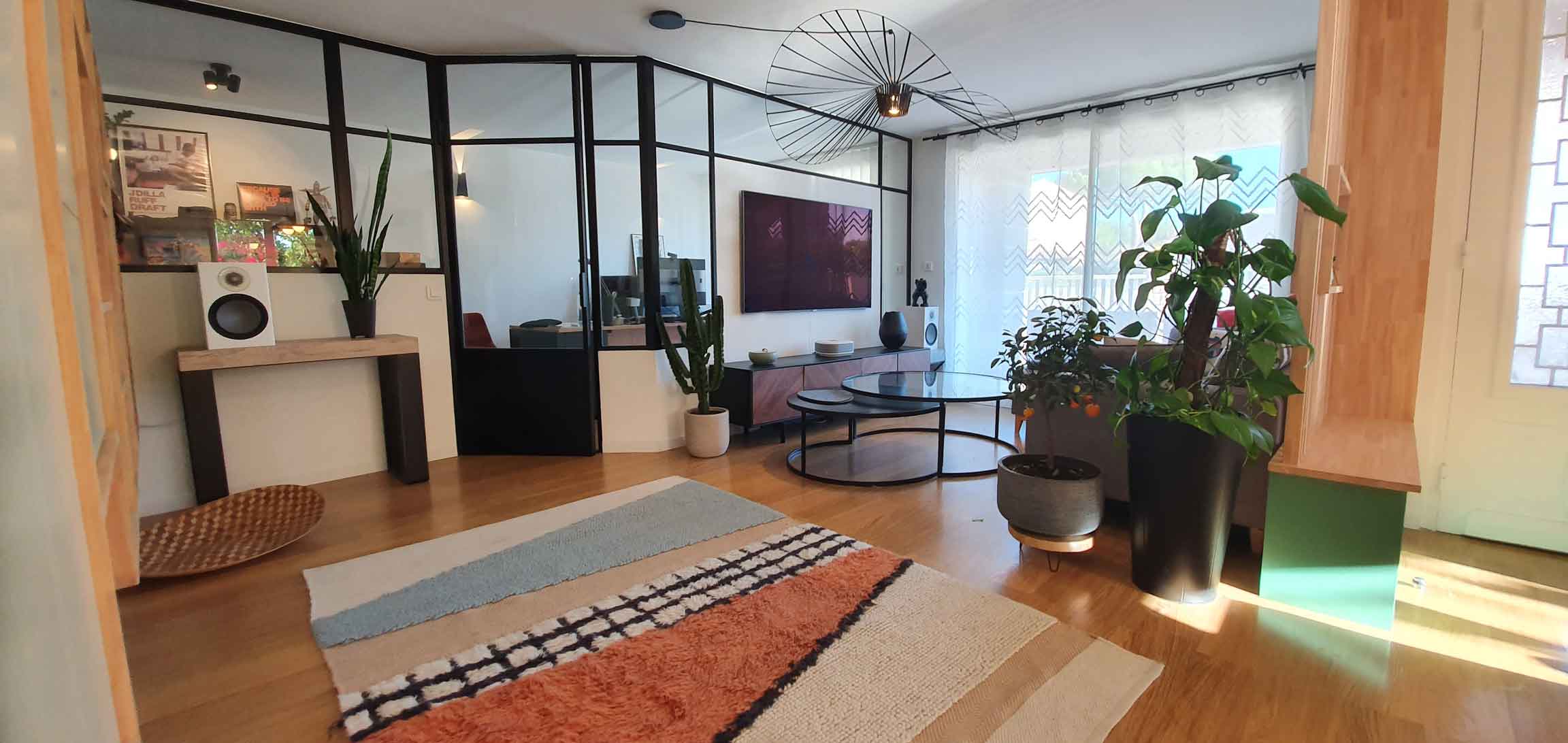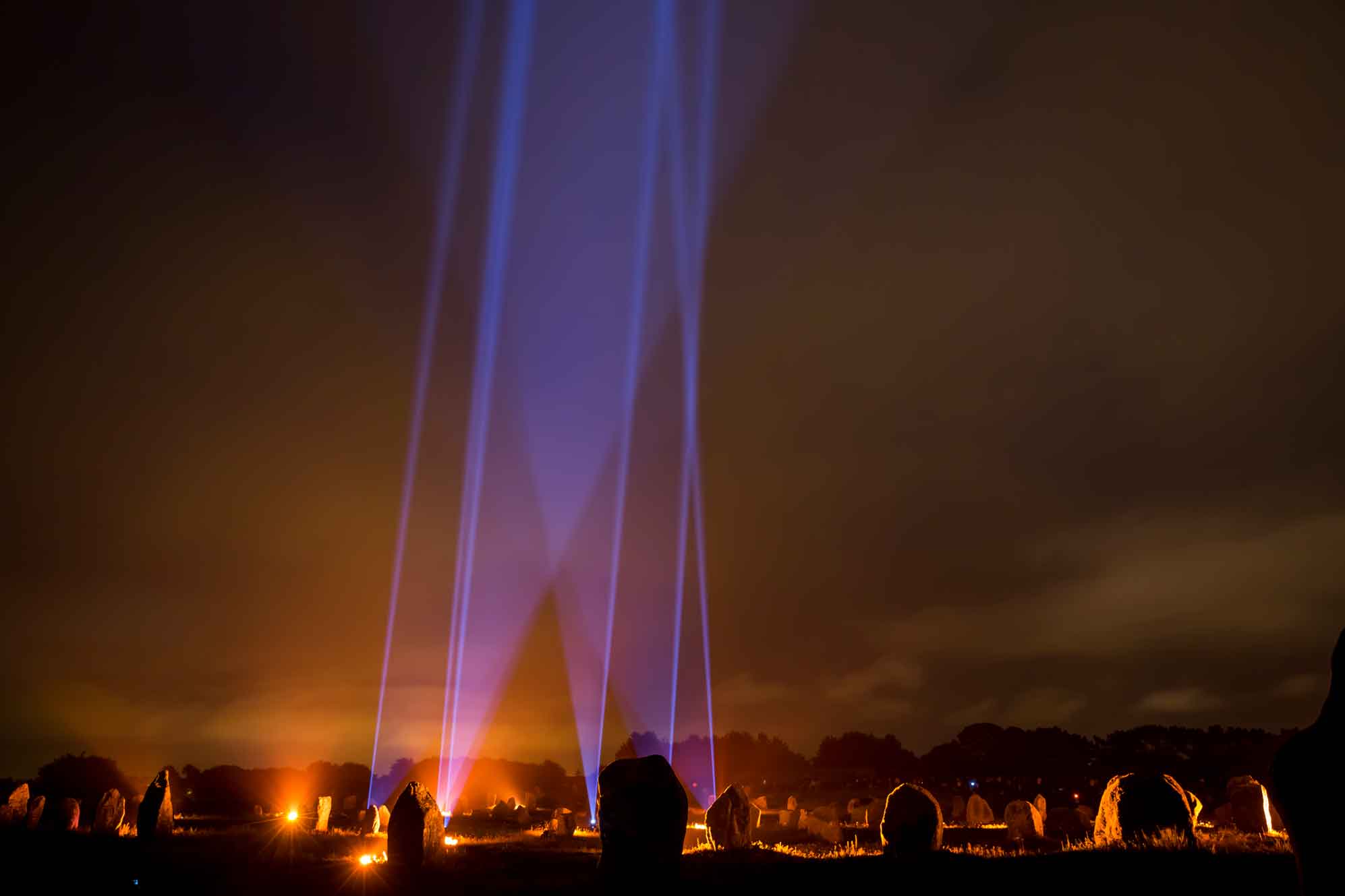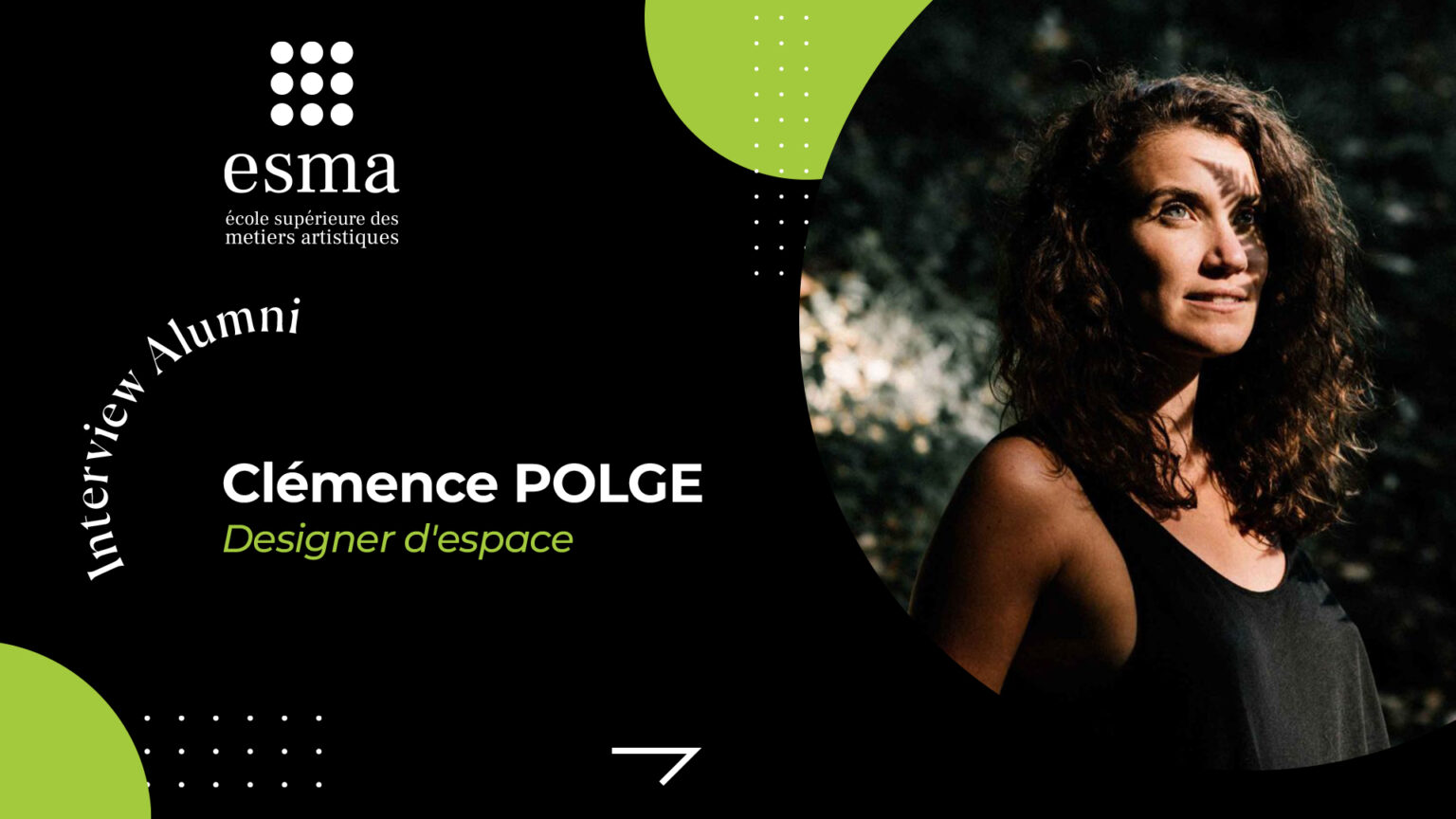
-
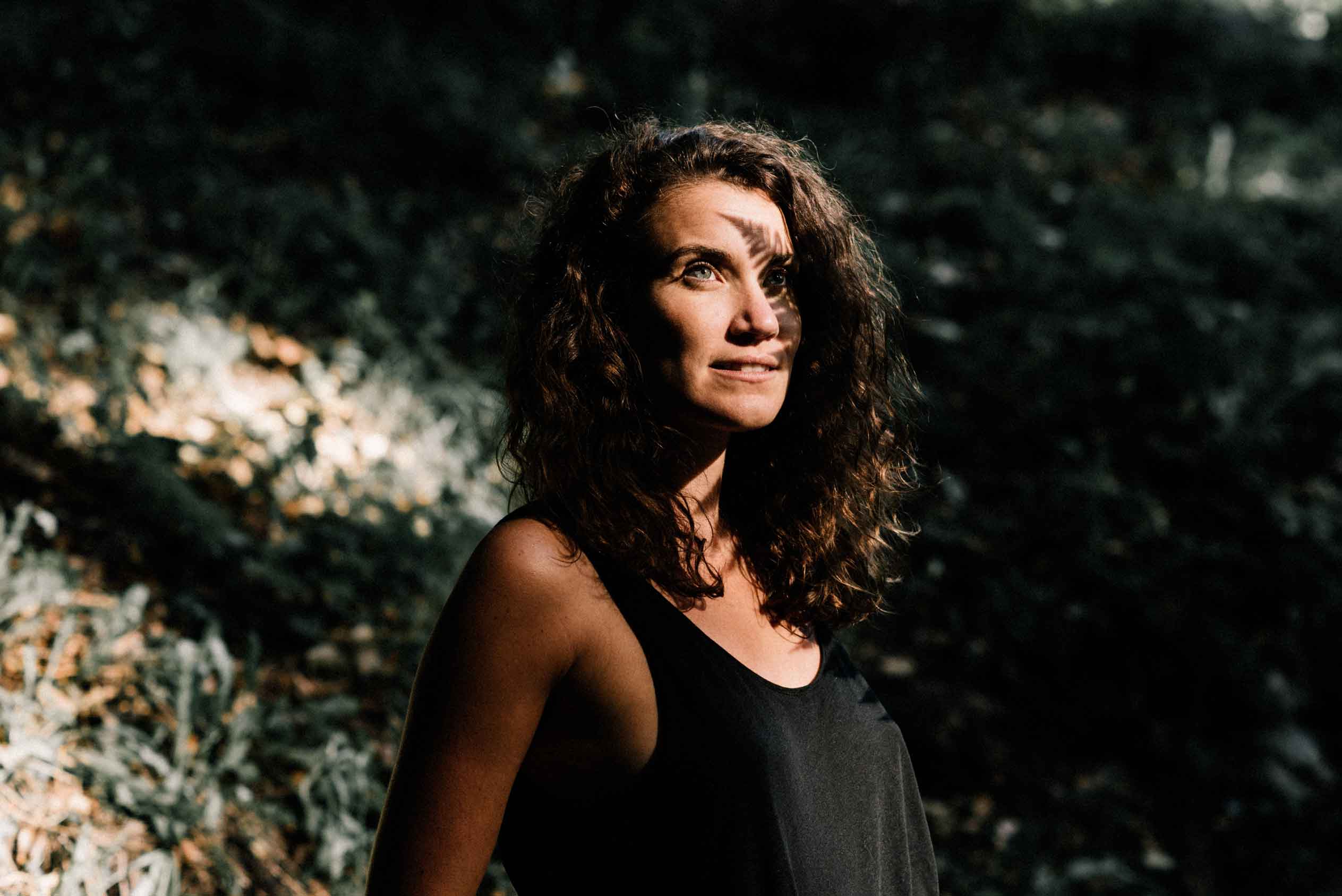
- Promotion 2008
- Training Interior Architecture
- currently works at Freelance
- position All-terrain designer
Clémence Polge began her career in what might be described as a ‘conventional’ career as an interior designer in an agency. After ten years or so, she made a 180-degree turn and adopted a nomadic ‘vanlife’ lifestyle, while retaining a link with space design but approaching it from a different angle. Read his portrait.
Discover her story on our YouTube Channel :
A look back at your ESMA years
What drew you to the world of space design? Why did you choose to do the BTS course at ESMA?
I’ve been immersed in the world of decoration since I was very young. My mum is passionate about everything to do with the house and garden, so you could say that she’s clearly rubbed off on me!
And it’s funny because I was destined more for the world of cinema, on the decor side. But after a brief spell at film college, I decided to change direction because I felt that it wasn’t the right course of study for me. In order not to lose my tuition fees, I finished my school year at law school… and as I’m not one to do things by halves, I went on to get my degree in Private Law. But my creative side caught up with me.
It was interesting and I learnt a lot (particularly in terms of work organisation and structure) but I couldn’t see myself doing law for the rest of my life. So I started researching and finding out about the different design and scenography courses. Some friends told me about ESMA… so I went to the Open Days and after talking to some of the students… I knew! What’s more, a 3-year course suited me perfectly at this stage of my student life, which was already a little too far advanced.
What did the course give you?
When you start at ESMA, everyone tells you that you have to soak up everything you can, that you have to ‘sponge’. I often use this metaphor when young people ask me about the MANAA. This first year is a bit of a mishmash, but it’s so rich and intense. It’s the foundation of my entire artistic training and I remember never having worked so hard with so much pleasure in my life. And sincerely since. I slept, lived and ate Applied Arts. But I loved it!
This year is also the one that allows you to go into space or graphic design, and although I knew in advance that I would go into space design, I gave the rest a chance. In the process, I took everything I could get my hands on. Over the next two years I learnt all the ins and outs of the creative process. At the time, very few people did everything on a computer. And that’s just as well. There’s plenty of time to learn in an agency, where unfortunately pencils are quickly put away in drawers.
Was there a subject you particularly liked?
Apart from all the very practical subjects of course, I loved Art History. Because I’d never studied the different artistic and architectural movements and I think that knowing what happened before is essential for understanding current practices. And cultural references are the basis of a good creative approach.
When you left school, did you have a clear idea of what you were going to do?
During my second year at ESMA, I had to do a 6-week work placement in an agency. I was lucky enough to be accepted by François Fontès’ architectural practice in Montpellier.
During those 6 weeks, I worked on a project for a detached house in Corsica. I studied the project a lot, drew some of the interior spaces, helped the model builder and attended a lot of meetings with Fontès. It was all very exciting. And the teams adopted me very quickly. So much so that during my 3rd year at ESMA I had my own chair and a piece of desk in the agency’s open space, and I used to come and spend half a day a week working on my own projects, exchanging ideas, taking advice…
On the eve of my final exams, Fontès took one look at my ‘Professional Project’ and said to me: ‘Come and see me when you graduate’. It was an offer I wouldn’t forget! I got my results on a Friday, and the following Monday morning I was standing in front of his office. A few hours later, I left with a contract starting the following September 1.
Your career path
Can you tell us about your job and your career path since graduating?
I stayed with the agency for about ten years. François Fontès was a real mentor to me. I was the only interior designer, so I was lucky enough to have a hand in a lot of projects. But I also quickly realised that it was difficult for me to remain confined to just one area. I constantly need to learn and be exposed to new subjects and projects. So when his executive assistant left and he offered me the chance to take his place in addition to my job as an architect, I jumped at the chance.
There were advantages and disadvantages to wearing this double hat, but this period was above all an opportunity for me to realise that my main assets were my qualities as an organiser and coordinator of teams. And although I remember feeling sick to my stomach 3/4 of the time and even quitting at the end because I was exhausted, I also remember coming out of all that armed with lots of new skills and knowledge, and sure of what I wanted for the future. Well, especially sure of what I didn’t want any more! And therefore stronger.
In the meantime, I’d created a lifestyle blog to take refuge and escape, and my own business to work on projects on the side.
And since 2017, I’ve been self-employed and nomadic. In other words, I live in a converted van, I criss-cross Europe on a daily basis and I continue to work remotely.
My different experiences have led me to diversify a lot and I’m now able to offer a wide range of services: content creation (text + photos), illustration, graphic design, community management and space and furniture design of course.
Oh, and I’m also the author of two Drive Your Adventure van travel guides: Norway and Portugal. Two incredible projects carried out with the rental company WeVan and the manufacturer Mercedes-Benz.
What skills/qualities do you think are needed in this profession?
Creativity, of course, but above all curiosity and adaptability. Today’s world of work requires you to be versatile and able to navigate between different fields. Sometimes even linking them together.
What’s more, with the explosion of digital technology, the public and private spheres of individuals and businesses are becoming increasingly blurred. As a result, the role of social networks and digital communication has become inseparable from any professional activity. So I think it’s very important to know how to handle them.
What excites you about your job?
Starting up a new project. Getting to know my customers. Deciphering the way they live and work. It’s a fascinating time of exchange. I always feel very privileged to enter into this kind of intimacy.
And then at the end, the satisfaction of having succeeded in meeting a request and of having improved the living or working comfort of those who have entrusted me with their space!
Professionally, you describe yourself as an ‘all-round designer’. What does that mean?
This expression has a double meaning:
Firstly, because I’m nomadic, I work wherever I happen to be. Whether it’s in the middle of a forest, by the ocean, in a café connected to a European capital, or even from a supermarket car park (yes, it happens! That’s van life too!).
Then there’s my versatility and the different types of assignments I can take on professionally.
In 2012 you launched your blog ‘A Kutch Life’, based on travel, and even managed to become an influencer. At the same time, however, you continued to work for Fontès Architecture. In 2014 you launched your freelance business. How do you manage to juggle all this?
As I said earlier, it wasn’t always easy at the agency, so the blog was a bit like my safety valve. Initially it was more about fashion and lifestyle than travel… I admit that it didn’t have a precise theme, but it helped me a lot to define what I wanted personally and professionally… And when I set up my own business, it was to be able to professionalise the blog a bit more and then at the same time I had the opportunity to work on a great architecture project so I went for it… it was intense.
But to answer your question, in the long term it’s just not possible to juggle all that. Especially if you’re a bit too much of a perfectionist. I exploded in mid-air after a while… And to recover from that is complicated. People don’t understand. In short, it took me an initial false departure from the agency (which still lasted two years, during which I devoted myself to the blog), then two more years working there again (but teleworking most of the time) to accept it. These days, I prefer a more balanced lifestyle and a reasonable amount of work to a frantic rush of new projects.
What’s it like to be a ‘digi-nomad’ on a day-to-day basis? Isn’t it complicated to have a job related to space design (it might seem incompatible at first)?
I think that my agency experience, my portfolio and all my old contacts have a lot to do with the viability of my project. I get a lot of messages from young people at the end of their studies who want to start out on their own, but I quickly put the brakes on by explaining to them that I think it’s very difficult (unless you’re lucky and extremely talented) to be able to set up your own business from a distance straight after graduating. And I particularly think that space design is a discipline that really requires you to get out in the field!
On the road, my projects are limited to the creative process, specifying furniture or designing it where necessary and delivering written and graphic documents for companies. Of course, I’m always available to answer any questions you may have while the work is being carried out, but I can’t actually take part. As most of my projects come to me by word of mouth, customers already know that I won’t be there to accompany them. They’re happy with the price of my service, of course… so it’s fair to say that everyone’s happy!
Then again, that’s not all I do. Most of my income today is generated by community management… versatility!
You’ve lived in a van. You’ve even published 2 books on van life (Portugal and Norway). Can you tell us about these experiences? Is there another book in the pipeline?
Oh, that use of the past tense! It’s true that I would have been more sedentary than nomadic during this year of 2020 (even though I did half of the confinement in India!), but I do intend to be back on the road by spring at the latest!
As far as the books are concerned, it was in fact a call for applications put out by the WeVan company and in partnership with Mercedes-Benz to which my companion at the time and I responded in spring 2018. The project consisted of setting off to criss-cross Norway in a Mercedes Marco Polo, all expenses paid, for two months, and collecting enough content along the way (interviews, logs, photos, good addresses) to produce a book halfway between the story of our adventure and a travel guide in a van in Norway. We took part without even really believing it. At the same time, Norway was supposed to be the key stage of our summer for us, so we thought why not… it does seem like a sign, and at worst we’re still going with our own house on wheels! What’s more, the qualification period lasted a month and for the final stage we were already on our way. When we found out we’d been selected, we were in Denmark, so we had to turn around and go back to France to meet the teams and prepare for the adventure!
When the first book came out a year later, WeVan and Mercedes asked us to set off again for a second edition. This time it was Portugal, so we didn’t hesitate for long!
Since then, this second book has also been published and a new crew set off on the roads of France this year (which was actually a good thing!). As for me, I’m still working for WeVan as a community manager. So there’s no such book in the pipeline. On the other hand, I’m working on a small, more personal and possibly self-published project, an illustrated diary of my nomadic life…
You help people who ask you to fit out their van. How is that different, more complicated… than a house?
It’s completely different and there aren’t a thousand possibilities either. And the historic van outfitters such as Westfalia (and in particular the legendary Volkswagen combi) have already done their homework on the subject.
And no two home-fitted vans are alike. The materials, colours, textiles, needs and equipment vary from one crew to the next.
I’ve given a lot of advice to people wanting to get started, but I’ve never carried out such a project. If it hadn’t been for the books, I could have gone in that direction, but in the meantime vanlife has exploded in France and there are already far too many professionals on the market. Some of them are friends who do it really well! And then, as with everything, I didn’t want to mix everything up. I chose this life for a lot of good reasons and making a living out of it wasn’t one of them. I’d be afraid of losing the magic if I spent too much time behind the scenes.
What has van life taught you? Has it had an impact on your work?
That time is precious. That we waste it living at a thousand miles an hour without really enjoying it. That we don’t tell ourselves often enough that we only have one life. That we really are programmed. I had to unlearn everything before I could really start to let go.
That travelling on the road has nothing to do with living on the road. Another question of rhythm. Just because you live in a vehicle doesn’t mean you have to be on the move every day.
That I’m not actually that wild. I didn’t enjoy going out at all when I lived in the city. I even called myself wild. Well, since I’ve been living on the road, I’ve rediscovered the Other, and now meeting them is one of my favourite things to do. It’s amazing how much your relationship with the Other changes when it’s not biased by interests or inculcated ideas about how to look good in society.
That you really don’t need much. Every time I go to France, I unload more and more stuff. On the other hand, as soon as I get back to my family I’m quickly snapped up again by the lure of the shops in town!
And yes, my lifestyle has a real impact on my work. And for me it’s very positive. I feel like I’ve lived more in three years of nomadism than I have since I finished my studies. I’ve written two books, I’ve worked with Mercedes, I’ve come into contact with a lot of people in the tourism industry, I write for the van trade press and just recently Maison&Jardin offered me a column straddling my two worlds: architecture and nomadism.
Not to mention all the inspiration that comes from travelling and discovering other cultures… I always bring a bit of elsewhere into my projects now!
Aren’t all these facets that you express disturbing for your clients/future clients? Are they looking for this singularity or, on the contrary, are you not putting it forward?
I think that at the time this kind of multi-faceted status was synonymous with inconsistency. These days, versatility is in great demand, so I try to make it a strength and, above all, through my experience I’ve learnt to refocus and channel my assignments into a limited number of areas.
You have a presence on social networks. How does this impact the way you work?
Social networks are an integral part of my work these days. My presence and (small) visibility on Instagram contributed greatly to our selection for the book project. From a professional point of view, they have enabled me to develop my business as an illustrator and creator of photo content.
On a more personal and ‘vanlife’ level, I have a different relationship with social networks. Probably also because of my past as a blogger. I know it’s easy to fall into certain ways, so I’m very careful. For me today, they are above all a platform for exchanging ideas with two communities: nomads and illustrators.
Your Instagram account (Clémence Polge) is very much based on your travels. How does it fit in with your work?
It’s my ‘historic’ account, if I do say so myself!
It’s been with me since the very beginning. It’s been through the birth of the blog, the arrival of my cat, a burn out, a break-up, a few disappointments, but also lots of incredible opportunities and encounters… so it’s been hard for me to let go of it, but I did last November! I’m finally letting go of the past and repatriating everyone to my @roammates account!
You have another Instagram account where you share your illustrations. Can you tell us about it?
Yes, of course. It’s @justanothertravelogue. A travelogue is an illustrated journal.
This account is very recent. In fact I’ve only been drawing for two years. But I’ve mainly been doing it off-camera, in my logbooks. To tell the story of my travels and my nomadic life. Then one day, when I published a page from my notebook in a story, my friends and family asked to see more. Then others. Then I got an order. Then I was advised to open a dedicated account… once… twice… a year later, in the middle of my confinement, I finally gave in! I even launched an Etsy shop… and then a shop at the heart of my own website! But I really want to keep it fun above all.
You draw a lot of views of buildings and interiors. Do you do this for your customers?
Yes, I have a passion for façades. That’s what I mainly draw, in fact. The rest is more to practise and define my style, which I’m always looking for! And yes, depending on the project, I can do illustrated renderings.
Does Clémence Polge have a signature?
I don’t know if there’s a signature… I try so hard to adapt to my clients that in the end it’s a lot about them that I try to convey in my work.
But in any case, you could say that I specialise in bespoke furniture design. And I team up with a great joiner from Montpellier for most of my creations. Even in other towns! We make a great team, even from a distance!
Is there a project you’re particularly proud of that you’d like to share with us?
I think the Maison de la Vision boutique in Montpellier is certainly the project I’m most proud of. For its unique shapes and materials, and also because it has encouraged me to develop even more made-to-measure furniture and links with my other areas of expertise!
In conclusion
Any future projects?
Ongoing projects! I’ve just finished fitting out a home office in Lyon, with a few details still to be worked out. The renovation of a flat in Chambéry, my column Vivre Nomade in the leading magazine Maison&Jardin, which starts with the Christmas issue, and above all my new house on wheels, which I’m going to spend the winter fixing up before hitting the road again in the spring!
Where do you see yourself in a few years’ time? Still on the road?
Maybe… why not! I really don’t know. I’m not stopping myself from doing anything. We’ll see where life takes me…
Any advice for students and future students?
Don’t neglect work placements, which can certainly lead to a job.
Don’t hesitate to complete your training (if the situation allows, of course).
Spend a few years in an agency to get a feel for it, see different types of project, work on site and gain in skills and confidence.
Take in everything, all the time. It’s the best source of inspiration and creativity.
Follow your own path. Other people’s paths are already taken!
To follow Clémence
